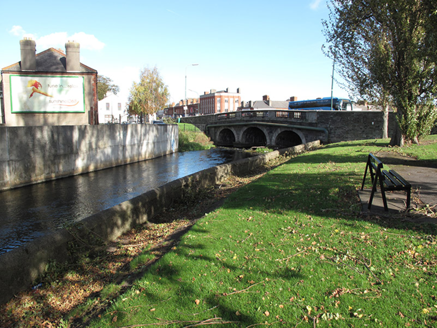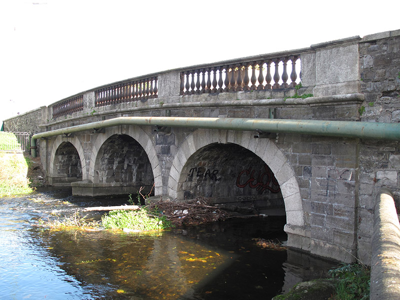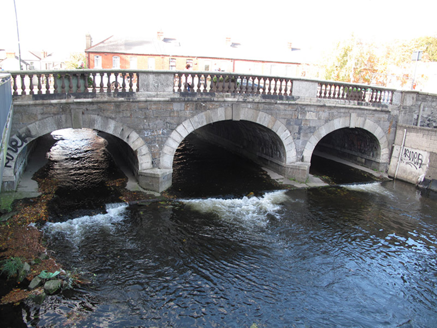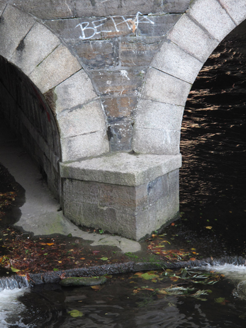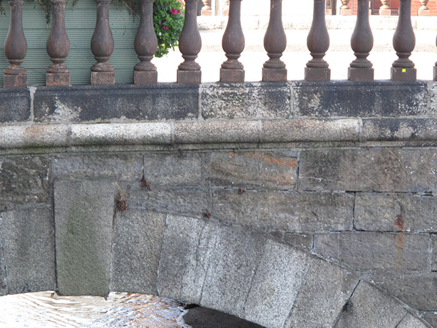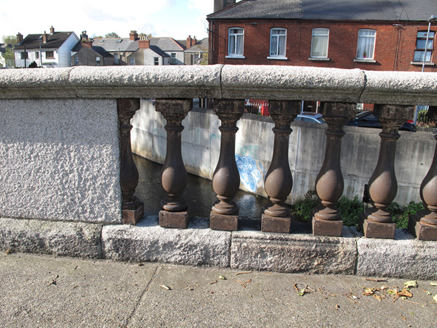Survey Data
Reg No
50120266
Rating
Regional
Categories of Special Interest
Architectural, Artistic, Historical, Technical
Original Use
Bridge
In Use As
Bridge
Date
1815 - 1820
Coordinates
316193, 236742
Date Recorded
17/10/2017
Date Updated
--/--/--
Description
Three-arch bridge, dated 1819, carrying Drumcondra Road over River Tolka, having elliptical arches flanked by shallow piers, tooled granite voussoirs and keystones, V-shaped cut granite cutwaters to both elevations and cut granite platband at impost level, and dressed calp limestone spandrel walls. Balustrade comprises cast-iron urn balusters and granite panels on carved granite plinth course over moulded stringcourse, with carved granite coping. Approached by squared rubble calp limestone walls having cut granite coping. Situated at meeting of Drumcondra Road Upper and Drumcondra Road Lower.
Appraisal
Cut granite detailing is employed to good effect to enliven and articulate this well-proportioned bridge. The execution of the arches, cutwaters and balustrades attests to the skilled artisanship employed in its construction. The use of cast-iron for the balusters provides a pleasing contrast to the masonry construction and detailing. This structure forms an attractive landmark and its setting, with a small park to the west, creates a pleasant vista. Attributed to George Knowles, it was built to replace an eight-arch bridge that was less than half the width of the present structure. The early use of elliptical arches, which were introduced in the late eighteenth century to produce a flatter bridge profile, is of technical interest, and is evidence of skilled civil engineering. The road was the property of the Dublin to Dunleer Turnpike Trust and the construction of a wider bridge is indicative of increasing traffic, reflecting the expansion of the city in the early nineteenth century. It is thus an important reminder of the development of Dublin City's transport infrastructure.
